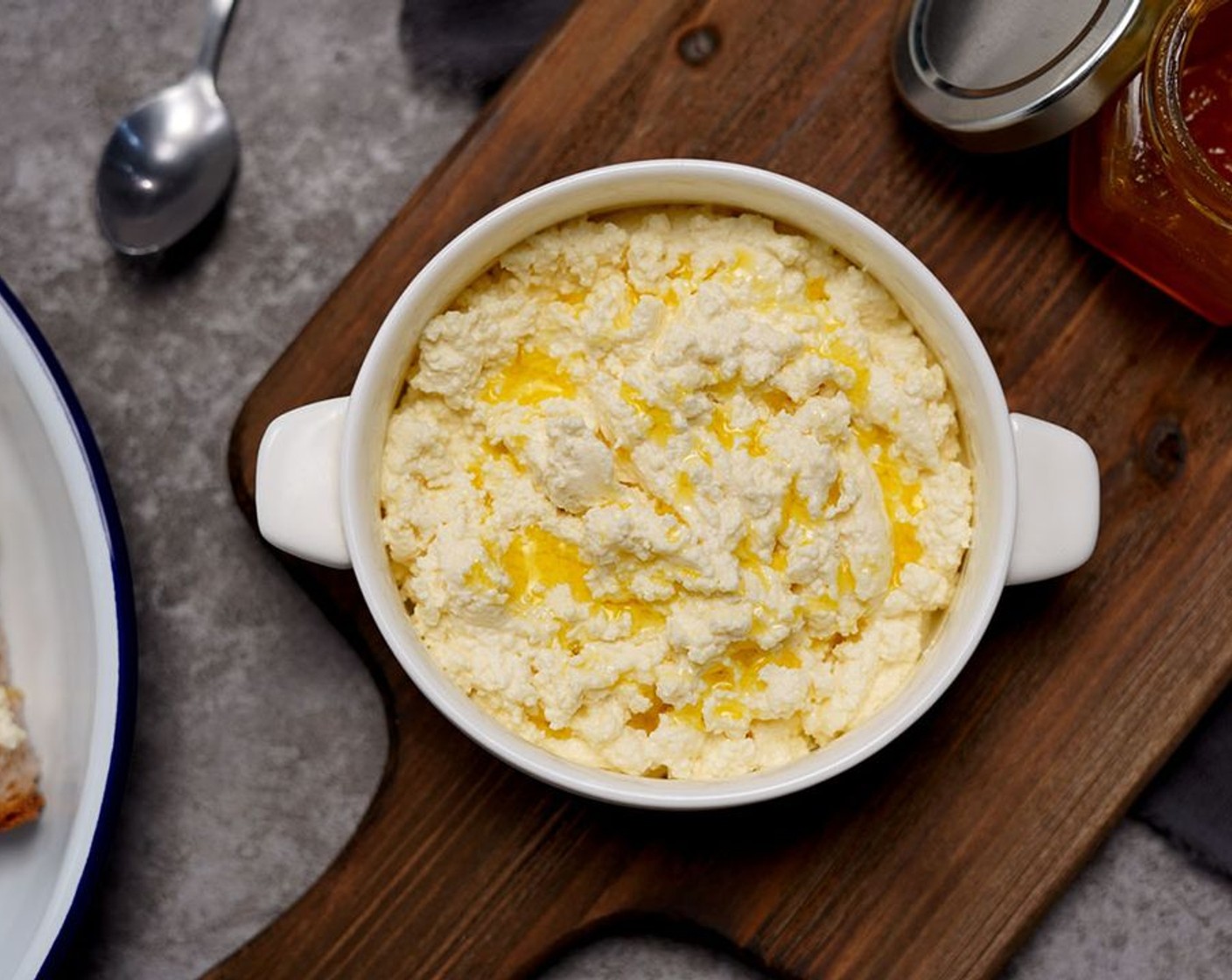Love This Recipe?
Cottage cheese has gotten a bad rap in the past, but we're here to change that! Topped with fruit and granola, mixed into a salad, or simply smeared onto toast, this delicious dairy product is about as versatile as it gets. Plus, you'll be shocked with this recipe by how easy it is to make cottage cheese at home.
How To Make Homemade Cottage Cheese
How To Prepare Cottage Cheese
We highly recommend using a food thermometer to ensure the proper temperature when cooking your milk. Once you have reached the temperature of 120 degrees F, off heat, then slowly add the white wine vinegar to start the curdling process. Once the whey starts to separate from the milk curds, stir it to break it up. For half an hour, cool it down to room temperature. Once rested, return it to low heat, season it with salt, and continue to stir it to break down the curds more. Drain and squeeze out the whey using two layers of cheesecloth or tea towel, and you should end up with your fresh cottage cheese. Cool it down before adding the heavy cream and storing it.How To Store Homemade Cottage Cheese
Cottage cheese doesn’t freeze too well, but you should keep it in the part of your fridge where the temperature is more consistent. Cottage cheese can keep for a maximum of 10 days. Keep it in an airtight container, and we recommend storing it upside down. This will help reduce the growth of bacteria, prolonging its shelf life.Ingredients & Substitutions
- Whole Milk - usually a base for making homemade cheese. This is also a great recipe to make use of your milk nearing its expiry date.
- White Wine Vinegar - the chemical reaction of acid and milk creates the curd that separates the whey. You can also substitute lemon juice for white wine vinegar.
- Salt - we all need a flavor booster for any dish, of course. Salt may be very simple, but it’s an absolute flavor booster! It’ll give that slight salty taste of our homemade cottage cheese.
- Heavy Cream - adding heavy cream makes the taste and texture creamier, making it more delectable and spreadable.
Tips & Suggestions
- Keep your excess whey - whey has a lot applications like using it to ferment vegetables, liquid in bread making, adding it to protein smoothies, or even non-food applications.
- Do not use ultra-pasteurized milk to make cottage cheese; it will not curd. The best milk to use for homemade cottage cheese is whole pasteurized cow milk. Reduced-fat milk is also acceptable to use unless it’s ultra-pasteurized.
Frequently Asked Questions
What Can I Use Cottage Cheese For?
Homemade Cottage Cheese is not just for breakfast bowls, toasts, or scrambled eggs. You can eat it with pancakes, mix into your vegetable and fruit salads, add to smoothies or make these recipes with it: Chickpea and Cottage Cheese Tostadas, Lazy LasagnaIs Cottage Cheese and Ricotta the Same Thing?
Cottage cheese and ricotta sure have a lot in common. They can be used interchangeably in many recipes for that reason. But they are not the same thing. When it comes to texture, cottage cheese is much lumpier and grainier than ricotta, so when it comes to recipes like lasagna or cheesecake, using cottage cheese might be a bit tricky.You Might Also Like:
A Collection of Recipes You Should Explore
Other Popular Recipes You Should Try

Bite
1HR
Total Time
$1.23
Cost Per Serving
Ingredients
Servings
4
us / metric
16 cups
Whole Milk
1/2 cup
White Wine Vinegar
2 Tbsp
Salt
1/2 cup
Heavy Cream

